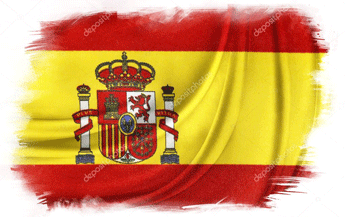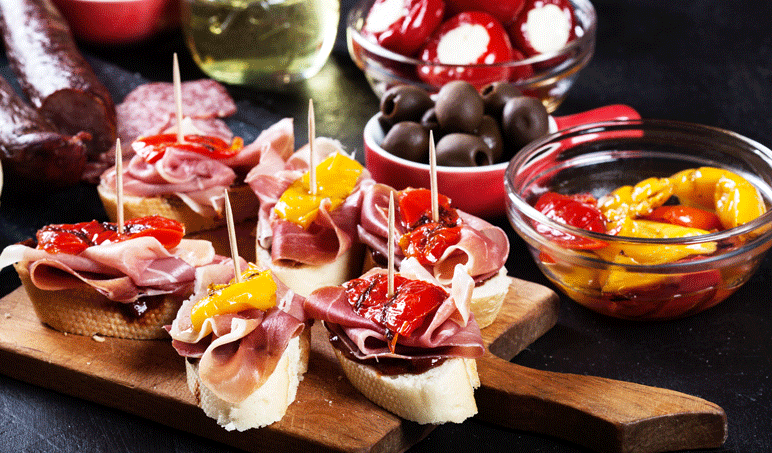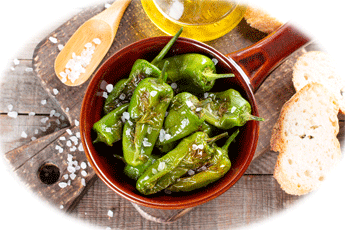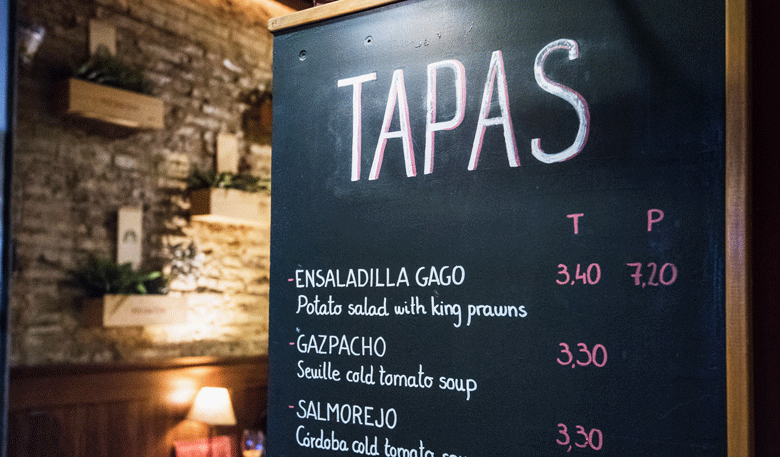
While Christopher Columbus’ 1492 misguided voyage to the West Indies had the result that Spain probably became the first country in Europe where Chillies were introduced, the Spanish people did not become immediate fans. Initially, Chillies were considered mere biological curiosities from the New World. They were initially only grown in monasteries and botanical gardens for their ornamental properties, rather than for their use as a culinary ingredient.
 Slowly but surely, however, things began to change. The monks became more adventurous and started experimenting with using Chillies in their cooking. Spanish farmers also started growing them as a domestic crop - as an alternative to the (and costly) black pepper, we know today. In the 15th/16th century, when these changes took place, black pepper was the preserve of only the super-rich, as it is said to have cost more than its weight in gold. To have something similar in the form of Chillies was to the poor farmers of the time, a taste of a lifestyle they could not afford
Slowly but surely, however, things began to change. The monks became more adventurous and started experimenting with using Chillies in their cooking. Spanish farmers also started growing them as a domestic crop - as an alternative to the (and costly) black pepper, we know today. In the 15th/16th century, when these changes took place, black pepper was the preserve of only the super-rich, as it is said to have cost more than its weight in gold. To have something similar in the form of Chillies was to the poor farmers of the time, a taste of a lifestyle they could not afford
As time stepped on Chillies (particularly the milder varieties) gained popularity, it became more and more entrenched in Spanish cuisine, but even today they are still not used to the extent that they are, for example, in Asian and African cooking.
 Tapas and more
Tapas and more
While the tendency in Spanish cuisine is definitely towards milder varieties of Chillies like the Padron and Gernika peppers (from the Basque region), Spain has a wonderful climate for growing Chillies. A variety of the super-hot Naga family (think similar to Dorset Naga) is successfully grown in Spain in the Spanish Naga (aka Gibraltar Naga).
The Gernika Chilli (also known as the Choricero Chilli) is used in different  ways at its different stages of maturity. When young and still green, it is fried and typically served as tapas, or when allowed to mature and turn red, is dried and used as a flavouring and colourant in Chorizo sausages. The Choricero is the family of the famous Espelette Chilli, which is grown on the French side of the Basque region. Both have special protected status, declaring them unique to their regions, and that they must have been produced and packed in the area to be sold commercially under these names (Cookapedia)
ways at its different stages of maturity. When young and still green, it is fried and typically served as tapas, or when allowed to mature and turn red, is dried and used as a flavouring and colourant in Chorizo sausages. The Choricero is the family of the famous Espelette Chilli, which is grown on the French side of the Basque region. Both have special protected status, declaring them unique to their regions, and that they must have been produced and packed in the area to be sold commercially under these names (Cookapedia)
Other uses for the Chilli in Spain are rice dishes, being grilled or stuffed with cheese, pickling, in Chilli sauces like that used for Albondigas (Spanish meatballs) and as in the case of when used as a powder, Patatas Bravas (spicy potatoes).

Padrón. This is an iconic Chilli used in Spanish cooking . It has a Scoville rating of 500 -2500 SHU from Padrón, Galicia, Spain. While most are mild, a certain percentage at the upper end of the Scoville rating scale can be quite hot. Padróns grow to approximately 2 inches long and about 1 inch thick, and can be found in colours ranging from green, yellow, and sometimes red. Used in recipes like Pimientos de Padrón (Chillies blistered in Olive oil) and Pimientos de Padrón Rellenos de queso Tetilla (Padron Chillies stuffed with Tetilla cheese)

Pimiento Choricero (aka Gernika) A mild sweet Chilli with a Scoville rating of 0 to 1000 SHU from the Basque town of Gernika, Biscay, in the Autonomous Community of the Basque Country, Spain. They are harvested while still young and green at a length of between 2 and 3 inches long with an approximately 1-inch width. In this format, it is prepared in a similar style to Pimentos de Padron (blistered in hot olive oil and served as Tapas). Another way to use these Chillies is to allow them to mature and turn red before drying them for use as an ingredient in making Chorizo sausages and flavouring dishes like Bacalao a la vizcaína (Salt cod in Biscay sauce).
Pimiento Ñora. A mild ball-shaped chilli with a Scoville rating of 0 -1000 SHU from Murcia, Southern Spain. It turns to a bright red colour when mature, and is then dried. It is extensively used in Spanish kitchens in the form of Paprika. In the cuisine of the Valencian community (Alicante) of Murcia, it is fried when fresh to colour and flavour rice. In Catalonia, it is commonly used as an ingredient in Romesco sauce, used to flavour Catalan recipes for rice, grilled meats, vegetables, and fish. A typical recipe in this region is Arroz Negro (black rice with squid and prawns).


